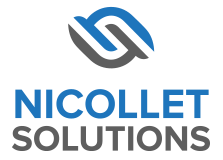As the peak of holiday return volume reaches retailer’s facilities, operational leaders are challenged to move the product quickly through the reverse pipe. This challenge raises the question, how valuable is rapid processing in reverse? The answer is that it is crucial; reverse speed drives value to the customer and to the company’s financials.
As the peak of holiday return volume reaches retailer’s facilities, operational leaders are challenged to move the product quickly through the reverse pipe. This challenge raises the question, how valuable is rapid processing in reverse? The answer is that it is crucial; reverse speed drives value to the customer and to the company’s financials.
This value is primarily in three areas—the impact on the customer, the financial impact, and the cash to cash cycle time.
Value to the Customer Experience
- Timely Customer Credit: By quickly processing customer returns, the customer receives credit for their return in a timely manner ensuring a positive return experience.
- Avoid Issue Investigation: If credit takes longer than expected, customers will begin to investigate if the return was lost and will reach out to customer care, who may in turn reach out the return center to investigate. This results in consuming unnecessary resources and creating frustrated customers.
- Future Sales: Most importantly, if returns are not processed in a timely manner, the customer may lose confidence in the retailer, which will impact future purchase decisions.
Value from Increased Recovery with Quick Ready to Sell
- Seasonal Products: By processing units quickly they will be able to be resold
before the end of the season. Take for example winter gear like hats and gloves.
If returned units are ready to sell in 14 days from return, i.e. Mid-January, they are much more likely to sell than if processing takes 60 days and the product is not ready to sell until March. - Launch of Constrained Product: Some products launch with limited inventory and during the time of launch customers are eager to get the new products. Processing returns of these goods and getting them ready to sale quickly will increase that retailer’s sales and market share. For example, take the latest gaming console. If typically returned open box units go through an efficient but slow 60 day process to be ready for sale, the window of opportunity for capturing those sales may have closed. However, if for the constrained period, a quick (and potentially more costly) process can be developed to reduce the turnaround time to a few days or even hours, enabling incremental sales during the constrained period.
- Maintain Value of Goods: Some goods’ value decreases over time, so the speed of getting products ready to sell are particularly important for these product categories.
- End of Life Value Lost: Most suppliers will not take back obsolete inventory so the value of return to vendor goods is dramatically reduced. In addition, for non-return to
vendor goods the retailer will need to sell those goods at a significantly reduced
price once the product is removed from the assortment, so quickly getting them
ready to sell maximizes the value.
Value of Speed from Reduced Inventory
- Freeing Up Cash: When units are processed quickly and moved out of the return center that reduction in inventory frees up cash to reinvest in new inventory or other parts of the business.
- Smaller Facility Needed: The reduced inventory in the facility lowers the peak capacity required which reduces the square feet needed for storage.
- Supplier Partnership: By quickly returning the product to the
supplier, they have the ability to maximize the value they receive for their
goods similar to the needs mentioned for the retailer. If the product has aged
and their recovery is reduced, it will impact the future cost of goods for the
retailer.
Bottom line, speed of processing has many advantages in freeing up capital, increasing the value received for goods, and protecting the customer.



Leave a Reply